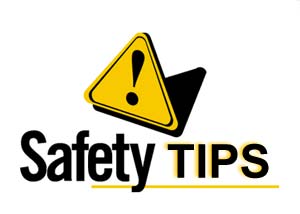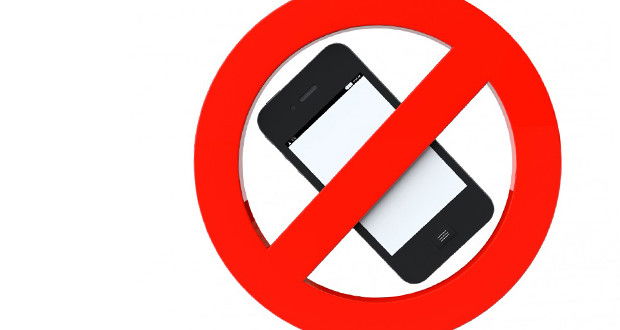CHEVRON REFINERY SAFETY TIPS

GENERAL PRECAUTIONS
Your safety is your personal responsibility.
Always follow the correct procedures.
Never take shortcuts.
Take responsibility and clean up if you made a mess.
Clean and organize your workplace.
Ensure a clear and easy route to emergency exits and equipment.
Be alert and awake on the job.
Be attentive at all times to your work surroundings.
When in doubt, contact your supervisor or manager for instruction, guidance, or training.
Never take risks when it comes to safety.
Obey safety signs, stickers, and tags.
Take short breaks when you keep up a repetitive motion for a long period of time, and sit, stand, or walk with good posture.
Report serious injuries immediately to a supervisor and get emergency assistance.
Keep things in perspective. Hazards may be limitless, so focus on the most likely risks first.
SAFETY IS A TEAM EFFORT
Educate everyone in the workplace about the safety requirements and consider posting a list of workplace safety tips. A workplace safety training will help them reduce or eliminate injuries and illnesses from occurring in the workplace.
Always keep the communication lines open with your co-workers, employers, or employees in order to promote and maintain a safe environment.
Immediately notify others of any (new or old) hazards that you perceive.
Be alert to hazards that could affect anyone— not just yourself; in this respect, maintain a team mentality at all times.
Report a hazardous condition immediately to your manager or supervisor.
Be conscious as to what others are doing around you, and do your best to ensure you don’t pose a hazard to them (and vice versa).
If you’re an employer, invite and involve your employees in safety planning; obtain their insight, give and take suggestions, and ensure that everyone is on the same page.

NO CELL PHONES ON THE RIG
NO CALLS, PROHIBITED
AN UPLIFTING THOUGHT: LIFTING AND CLIMBING SAFELY
Always use both hands when lifting a heavy or cumbersome object.
Adopt a proper stance for lifting: put the strain on your legs, not your back (crouch at your feet, keep your back straight, and don’t bend at the waist).
Test the weight before you lift something up completely; it might be too late if you realize a few seconds later that it’s too heavy or cumbersome for you.
- An easy way to do this is to nudge it with your foot first.
Consider a back brace if the work is heavy or you have a sensitive back.
Move your feet, not your back, when you want to travel or turn while carrying a heavy load.
Lift slowly and smoothly.
Keep your burden close to your body; this means less strain on you.
If your load is too heavy for you to handle alone, don’t be shy—ask for help!
Ensure ladders are secure and steady before climbing aboard.
Never climb on improvised ladders. Shelves and storage units are poor substitutes. Don’t be lazy, and find a proper solid ladder.
Don’t let appearances fool you. Railings might appear solid and fixed, but they might be improperly secures; at least, test them first.
Use safety harnesses if your job includes heights.
Eliminate distractions when working on a roof, scaffold, or other elevated platform. More than ever, stay focused and alert!
Keep an eye out on the floor to ensure it’s free of obstacles and spills. If it isn’t, get cleaning!
TOOLS AND MACHINERY: PUTTING SAFETY FIRST
- Use machinery only if you’re authorized, trained, and alert.
- Always use the appropriate tool for the respective task.
- Clean your tools and keep them in good working order.
- Organize your tools and don’t be careless; someone could easily slip or get hit due to a misplaced object.
Always ensure that the operator of a machine sees you; never approach from behind or from a blind side.
Do not perform a task unless you’ve been trained and you are aware of the hazards as well as how to mitigate/eliminate them.
Never leave machinery running unattended.
Never remove safety guards that are in place to protect you and the surrounding area.
Obey all operating instructions.
If something is wrong, stop the machine immediately and get assistance.
Communicate your location and process to those around you, so they’ll know where you are, what you’re doing, and when they need to be getting out of the way.
Never walk in front of a forklift, tractor, or any other heavy machine; the operator may not have seen you—and, even if he has, there’s always room for error, so make sure that error isn’t you being trampled.
Always read labels and instructions alerting you to potential dangers and hazards.
Unless it’s your job, never tamper with electric controls, cords, switches, or other such hazardous items.
Dress properly and compactly: billowing, loose, or hanging clothes and accessories (ties, earrings, bracelets, loose sleeves, etc.) may easily get caught up in moving parts.
- At best, the offending objects may be destroyed; at worst, they could ruin the machine or severely hurt you.
Never insert fingers or any other objects that don’t belong into moving machinery.
Turn off machines and equipment before you even consider cleaning, un-jamming, oiling, adjusting, or moving them.
BEWARE OF FIRE HAZARDS
Come up with a fire emergency plan; ensure that everyone knows and understands it.
Practice fire drills.
Avoid “power strips” which can ignite a fire if overloaded.
Ventilation is critical, especially if dealing with fumes and chemicals.
- Good ventilation helps to reduce the toxins in the air, and thus to eliminate highly flammable vapors.
In case of fire, know what has fed the fire.
- Never fight a grease fire with water; water will splash the oil and spread the flames.
- Be aware of the whereabouts and use of fire extinguishers.
GEARING UP FOR SAFETY
Always wear appropriate clothing and shoes respective to your job.
Fire extinguishers must be available and readily attainable.
First aid kits must be available and readily attainable.
Never remove or tamper with safety devices.
Use a back brace if you’re lifting heavy objects or you’ve got a sensitive back.
A hard hat will protect you if there’s a risk of falling objects
Wear gloves if you’re handling sharp objects or toxic substances.
Wear goggles if your work poses a hazard to your eyes.
Wear safety harnesses if you’re working from an elevated location and there’s the risk of falling.
Wear non-skid footgear:
- If the place involves slippery surfaces (kitchens, spas, pools, etc.)
- If you’re lifting heavy items
Wear a breathing mask at all times, especially if:
- You deal with dangerous or toxic chemicals or fumes
- if the rig has poor ventilation
- if the rig has debris, dust, and other flying particles.
Wear the protective equipment that is intended and recommended for your particular task.
- Seat belts
- Safety glasses or goggles
- Protective clothing, headgear, and/or footgear
- Safety harnesses, etc.



